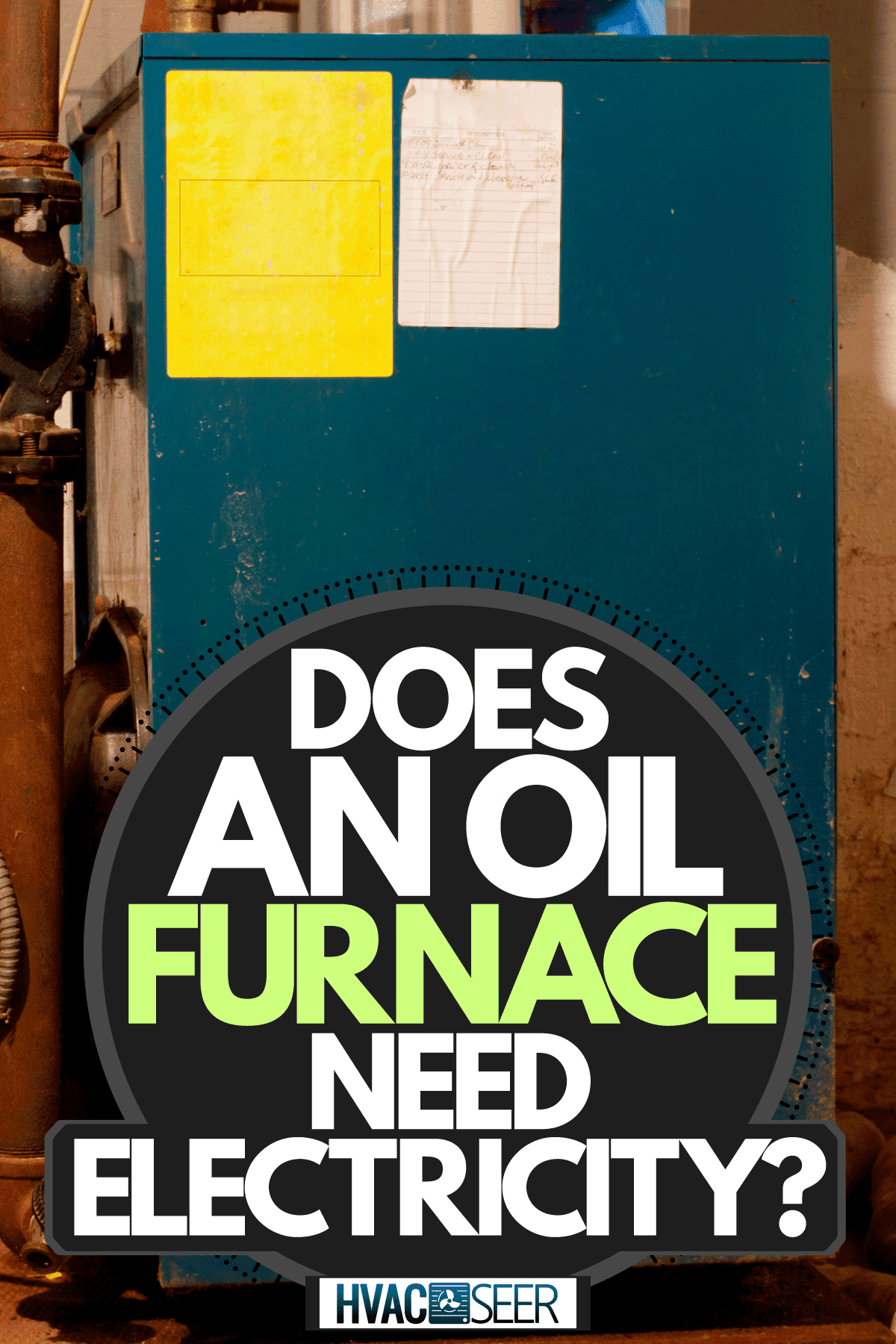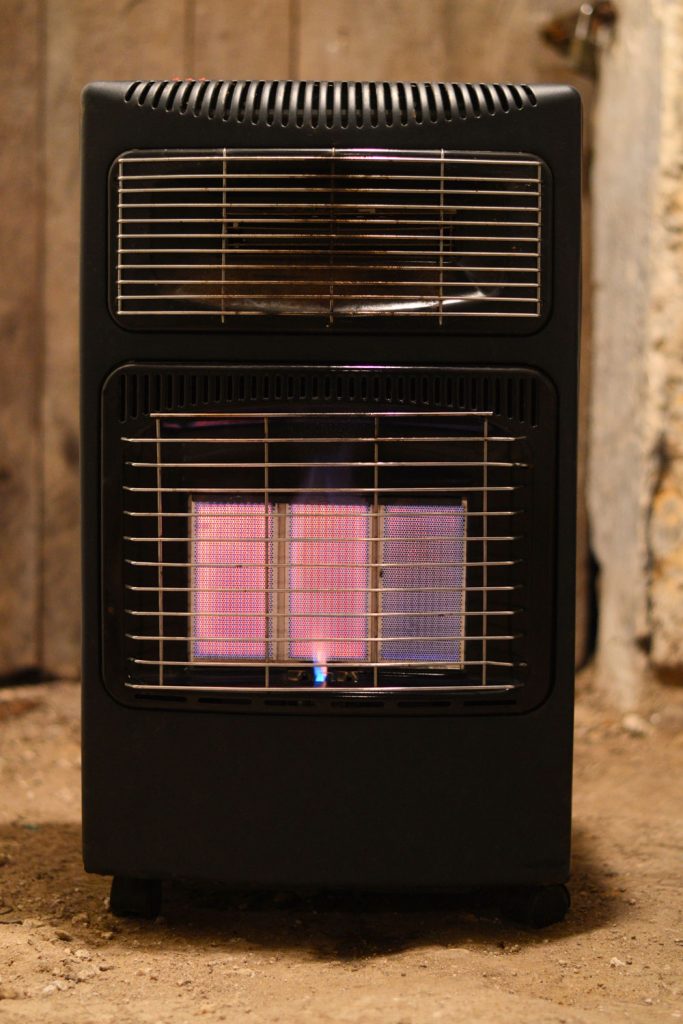Oil gained significant popularity during the 20th century as a source of relatively efficient clean heat. Even today, many oil heaters are used throughout the United States and beyond. Maybe you have an old oil heater in your home, or perhaps you are considering installing a new one. Either way, you are wondering if oil furnaces need electricity. In this post, we answer your question using industry professional knowledge and up-to-date research.
Yes, oil furnaces do require electricity. While the main source of heat comes from the combustion of oil, several components of the furnace function with electricity. These include the ignition, the oil pump, blower motors, circulation pumps (if needed), and controls.
Keep reading the rest of this post to learn more about the electrical requirements of an oil furnace. We include advice on how to keep an oil furnace running during a power outage. In addition, we detail some alternatives to electricity-dependent winter heating.

Electrical Requirements of Oil Furnaces
It would be nice if oil furnaces did not require any electricity, but that is not the case. Electricity is such a ubiquitous resource that oil furnace designers assumed it would always be available for heating the home. In the next subsections, we will discuss the main roles of electricity in oil furnaces.

Ignition
Oil, while flammable, requires a spark to ignite. The source of this spark is almost always an electrical ignitor. Most electrical ignitors in oil furnaces fire when the furnace first turns on to light the oil. However, some older furnaces have ignitors that continually spark.
In either of these situations, the oil will not ignite and produce heat without that electrical spark. You might be tempted to light the oil with a hand lighter in a way similar to natural gas furnaces and stoves. However, as described in the following subsection, this technique will not get you far.
Oil Pump
Oil is stored and transported in a thick and viscous liquid form. This means that it will not easily travel through the oil lines that connect your oil tank to your oil furnace. To assist this process along, oil furnaces come with oil pumps. These pumps are powered by electricity.
Blower Motor
Most oil furnaces also have one or more blower motors. For some furnace designs, the blower is required to bring air into the combustion chamber (remember, oxygen is just as important for combustion as the fuel itself). Also, if the furnace used forced air and air ducts, the blower must push the heated air throughout the home. Both types of blowers run on electricity.
Circulator Pump
For hydronic systems, systems that use a series of pipes to bring hot water throughout the home (think radiators), an electrical circulator pump is required. These pumps circulate the water throughout the pipes to bring colder water back to the furnace to be heated and to take hot water out to the pipes throughout the home.
Controls
In addition to the above components, oil furnaces often have a series of electrical controls and safety features. These can include the thermostat, which tells the furnace when to turn on, and other sensors which help ensure a safe, efficient furnace.
How much power does it take to run an oil furnace?
Generally, it takes approximately 2,500 watts of electricity to run an oil furnace. This is significantly less than a minimum of 15,000 watts as required for electric furnaces. However, keep in mind that different furnaces and furnace types have different electrical requirements.
Usually, the specific requirements are outlined on the label of the furnace or in the owner's manual. Often, the label is under a cover or panel that can be removed by hand or after taking out a couple of screws. To find the specific requirements of your furnace, look for "watts," which is sometimes abbreviated with a capital "W."
How do I run my oil furnace when the power is out?
When the power grid is without power, your oil furnace will not work. The only way to get your oil furnace up and running again is to find an alternative way to bring enough electricity to the electrical components of your furnace. Strategies include generators, batteries, and solar.
Powering an Oil Furnace with a Generator
Gas or propane-powered generators are the most popular and cost-effective way to power an oil furnace when the electricity is out. All it takes is the generator, some gasoline or propane, and the proper connector cord, and you can quickly be back in business. Be sure to place your generator where it will exhaust into an outside space.
Click here for a well-reviewed furnace from Amazon.
These generators are widely available at home-improvement stores. However, they may be difficult to acquire in an emergency because of the sudden increased demand. The wise move is to determine the size of generator you need for your furnace and then to have the generator and gas on hand before the power goes out.
Powering an Oil Furnace with a Battery
House batteries exist that can power your electrical furnace. Wiring and assembling these systems is not simple, so it is best to hire an expert to install the system for you. You will need the battery itself to charge it and make sure the power is converted into an alternating current.
Click here for a backup battery from Amazon.
Further, you will want to make sure to size the battery, so it is large enough to actually power the furnace for a significant amount of time (say one to two days). Also, you will need to keep the battery constantly charged since you never know when the power might fail next.
Solar Power
Click here for some small solar panels from Amazon.
Solar panels convert the power of the sun into useable electricity. Unfortunately, if the sun is out and strong, the need for your oil furnace is not as dire. Therefore, it is best to pair solar with a battery so you can use the battery during the cold night and then recharge it during the day when the sun returns. A major downside to this strategy is it is relatively weather-dependent.
How can I heat my house when the power is out?
If using the above means to produce electricity for your oil furnace are not an option, you will be left wondering how to heat your home when the power goes out. The only good option is wood.
Read this article for more information on home space heaters (although most require electricity): Types Of Space Heaters For Homes.
Wood
Wood heat is perhaps the oldest and simplest form of home heat. All you need is wood, a spark or source of fire, and a properly vented fireplace or stove. With these ingredients, you can produce ample home heat whether the electricity is working or not. For this reason, wood is a very popular backup heat source in areas that experience power outages during cold months.
For details on installing a wood chimney through your roof, read this article: How To Install A Wood Stove Chimney Through The Roof.
What Not To Use
It may be tempting to use propane-fired space heaters if you do not have a good place to burn wood or access a generator. However, this choice comes with serious health risks. Just as wood produces smoke, burning propane produces carbon monoxide. However, carbon monoxide is a potentially deadly gas.

Caption: An example of a propane space heater unsafe for unventilated inside use.
The difference is that smoke is easy to see and smell while carbon monoxide is colorless and odorless. As the space heater burns, it simply releases the carbon monoxide into the room. And, since it is likely cold outside, all the windows and doors will be closed. Over time this means that dangerous levels of carbon monoxide will build up inside.
Prolonged exposure to carbon monoxide can lead to dizziness, unconsciousness, and even death. This risk is why chimney and flue regulations are very strict for all combustion appliances. Also, this is why you should never run a gas generator inside.
In Closing
In this post, we answered the question of whether or not an oil furnace needs electricity. We detail all of the electrical components in an oil furnace and cover how to power an oil furnace during a blackout. In addition, we cover the main alternative to electricity-reliant heat. Good luck!



